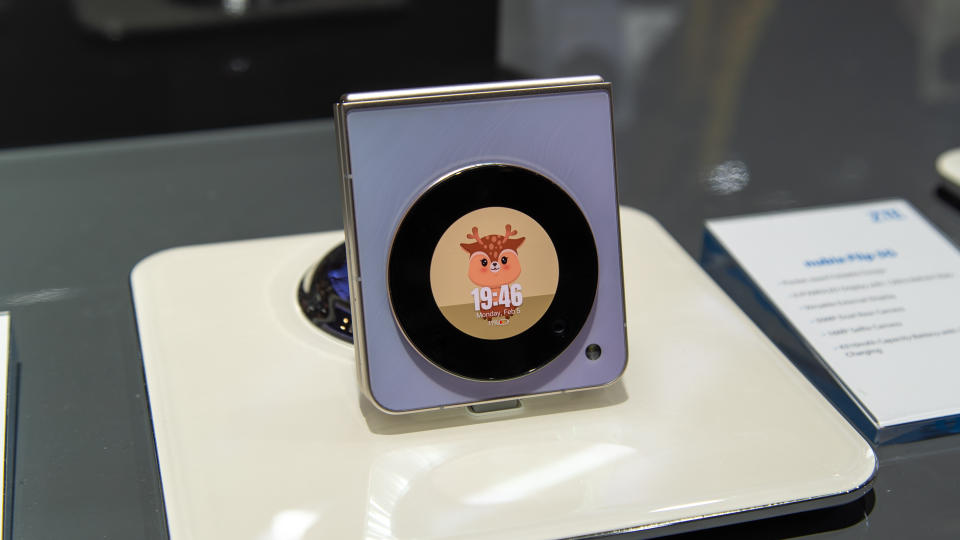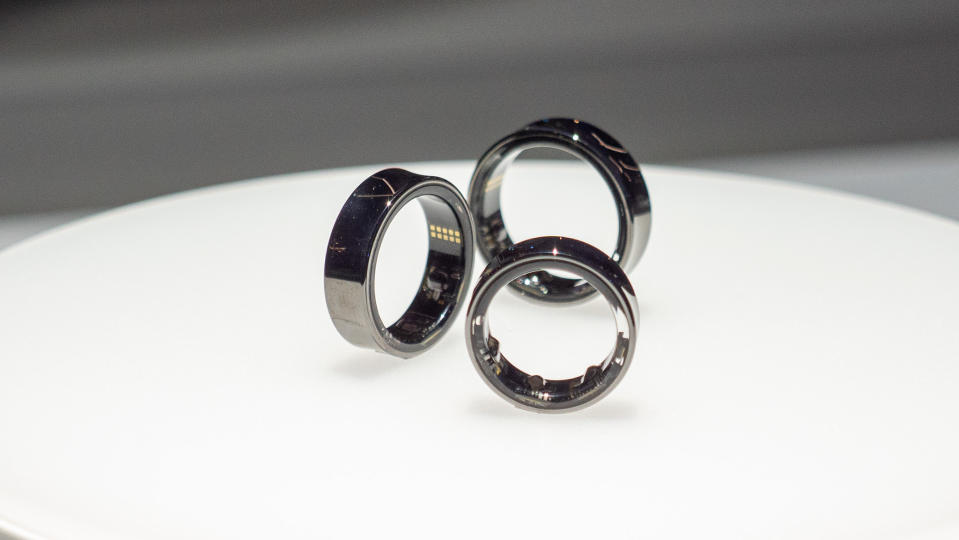Android Central's Best of MWC 2024

MWC 2024 has come to an end, and there was so much to see, so many things to do, and tons of new tech toys to play with. The annual event gives companies a chance to show off their most recent products, launch and tease new or upcoming devices, or reveal concepts that may never reach store shelves (but are still fun to play with). This year was no different, with impressive showings from our favorite brands, such as Samsung, Xiaomi, Motorola, OnePlus, and more.
Android Central was present at the event to check some of these products out, but there were some that stuck out to us more than others. With that in mind, here's our list for the Best of MWC 2024.
Best phone — Honor Magic 6 Pro

Honor used MWC as the launching platform for its latest global release, the Honor Magic 6 Pro. Aside from some stylish looks and glass that's nearly impervious to scratches, Honor packed the phone with the best smartphone camera we've yet seen, and that's saying a lot, given all the big advancements in camera tech in the past few years.
At the core of the new Magic OS 8.0 experience is onboard AI processing powered by Meta's Llama 2 LLM. This AI model allows for more onboard processing than any other phone currently supports, including offline translation, questions and answers, generative AI, and the best motion capture performance we've seen from any smartphone camera.
It's also got a brilliant display that uses a 4,380Hz pulse rate that's helpful for everyone, especially PWM-sensitive users. It's Honor's best phone in years, and it's now available globally.
Android Central's Harish Jonnalagadda and Nick Sutrich have been using the flagship phone for a few weeks now and have an initial Honor Magic 6 Pro review that covers the basics of what you would expect from Honor's latest and greatest. We'll have a final review in the coming weeks based on the final release software.
Best budget phone — TECNO Pova 6 Pro

TECNO is known for making affordable phones with tons of value, like the Phantom V Flip, and the company is back with a new gaming phone that will barely make a dent in your wallet. The TECNO Pova 6 Pro is a new 5G gaming phone with a rather striking design that's enhanced by the rear MiniLED lights that you can customize with notifications.
Thanks to the MediaTek Dimensity 6080, up to 24GB of RAM, and TECNO's Pova SuperCooled System, you'll be able to squeeze out more performance without having to worry about throttling or overheating. The 6,000mAh battery also ensures longer gaming sessions, while the company's first 108MP camera promises better clarity with in-sensor zoom.
The good news is the phone starts at just $229 when it goes on sale. The bad news is that availability will be fairly limited.
Best foldable phone — Porsche Design Honor Magic V2 RSR

Honor has made quite a name for itself over the past couple of years, and the new Porsche Design Honor Magic V2 RSR is the pinnacle of foldable design. The phone is sleek and incredibly thin while offering great performance and a large battery.
In his review of the Porsche Design Honor Magic V2 RSR, Jonnalagadda points out the displays as highlights of the phone, both of which are 120Hz OLED panels that support stylus input. You also get much faster charging speeds than what you'll find on other foldable phones, and the battery can easily last more than a day.
The phone is powered by the flagship Snapdragon 8 Gen 2, which is already a year old, but that doesn't seem to slow it down at all. Jonnalagadda says the Honor Magic V2 RSR has "terrific" performance, which is likely aided by the 16GB of onboard storage.
Fortunately, you'll be able to pick the phone up in Europe now that it is available globally, although you'll have to be willing to spend €2,699 to get it. Also, you're probably out of luck if you want to buy one in the United States.
Best flip phone — Nubia Flip 5G

TECNO isn't the only company with a cheap foldable. ZTE has entered the game with the new Nubia Flip 5G, a flip phone that might look a bit familiar, especially if you've seen Huawei's flip phones. Nonetheless, the company shows us just how low it can take the price of a foldable, making the Nubia Flip a very tempting buy.
The phone features a 6.9-inch 120Hz display, a 50MP dual camera system, and a circular cover screen for notifications and selfies. It also has a rather large 4,310mAh battery with 33W charging support, and the phone is powered by the Snapdragon 7 Gen 1, the same chip powering the Motorola Razr (2023).
Even better, the phone goes on sale for just $599 in global markets, meaning it'll give the Razr a run for its money.
Best concept phone — Motorola Adaptive Display Concept

Motorola's wearable smartphone first made its appearance at Lenovo Tech World in 2023, but the device made another cameo at Mobile World Congress, and we got some hands-on time with it. The idea of a wearable phone may seem outlandish, but the device is actually very cool when you play with it.
For it to work, the user must wear a metal bracelet that the phone's magnets can attach to. The back of the device is a rather soft material with a series of hinges underneath, making the phone look like one of those slap bands from back in the day (although we don't recommend slapping this on).
When you're not wearing it, you can have the phone tented or stand it up by bending the bottom portion, negating the need for a tripod when taking selfies. It seems there are a number of possibilities for a bendable, wearable smartphone, but whether it's actually practical is another story.
Best AI innovation — MediaTek's new generative AI features

MediaTek had quite a presence at MWC this year, showing off the new generative AI capabilities of its latest chips. While some gen-AI features are already present on chips like the Dimensity 9300, MediaTek demoed some pretty impressive features, like SDXL Turbo, a stable diffusion engine that's capable of generating an image on the spot as you type. The image will continue to change as you type to reflect what you might want until you're done typing, and it works incredibly fast, showing how far we've come with generative AI in just a short time.
MediaTek also showed off Video Diffusion Generation, which is basically the same concept but with video. However, the downsides to this feature for now are processing and clarity. The demo takes roughly 50 seconds to complete a three-second video, and the result won't always be legible. Still, with everything processed on-device, it's amazing to see current chipsets capable of such feats.
Best upcoming product — Samsung Galaxy Ring

Samsung first teased the Galaxy Ring at Unpacked earlier this year, and the device was on display at Mobile World Congress. The ring looks more or less the same as it did when it was first shown off, with a relatively concave design, glossy finishes, and visible sensors on the inside. This is, without a doubt, a gorgeous piece of tech that's bound to take advantage of the best Samsung has to offer, which includes Galaxy AI.
We're still waiting for Samsung to fully launch the Galaxy Ring, but the company did divulge more details about its upcoming health wearable. According to Samsung, the Galaxy Ring will have various battery sizes depending on the actual ring size, and it should be able to last somewhere between five to nine days on a single charge. That's roughly in line with the Oura Ring, which lasts about a week on a single charge.
Unfortunately, we couldn't get our hands on it, but we could see the different sizes and finishes, and we can't wait to try it out. We may have to wait a little while, however, as Samsung says it will launch in the second half of 2024.
Best wearable — OnePlus Watch 2

Wear OS is finally taking off, with brands like Xiaomi and OnePlus finally getting on board. The OnePlus Watch 2 is the latest flagship Wear OS smartwatch, featuring the Snapdragon W5 Plus Gen 1 chipset, multi-day battery life, and a unique hybrid interface to help carry the load with background tasks.
In his OnePlus Watch 2 review, Harish Jonnalagadda was impressed with the watch's design, battery life, and impressive 60Hz OLED display. The phone has surprisingly good performance, and fitness enthusiasts will like that it has dual-band GPS and IP68 water and dust resistance.
The OnePlus Watch 2 goes on sale on March 4 and will be available for $299. That's a lot less than the Galaxy Watch 5 Pro, which is a more targeted Wear OS smartwatch with somewhat equally impressive battery life.
Best software feature — Motorola Smart Connect

Motorola's Ready For is a great way to connect your phone to external displays to enhance your productivity, but the company is taking things to the next level with Smart Connect. This new feature builds on Ready For by allowing seamless interaction between your phone, laptop, and tablet, all at the same time.
For instance, you can use a single mouse or keyboard between all three devices, share files easily with a connected hub, or copy and paste images from one device to another. You can also start a Spotify session on your phone, then swipe it over to your computer, where it'll open an instance of the app and continue right where you left off.
Motorola also showed off a feature that lets you have two separate instances of your phone, one on the actual phone, and another on your computer. This lets you, for instance, hand your phone to your child to play a game while you continue to do other things like send text messages.
Smart Connect has a lot of promise and is one of the best multi-device solutions we've seen.
Best XR device — Xreal Air 2 Ultra

Smart glasses are rising in popularity, and Xreal is one of the most innovative in the space with its series of spatial computing glasses. While the latest Xreal Air 2 Ultra don't look revolutionary from the outside, they do something no other pair of AR glasses have: 6DoF tracking. In short, that means they can track the space around you like a VR headset, mapping it out in 3D and allowing you to move around virtual objects as if they were real.
Android Central's Nick Sutrich, who got to try on the glasses, writes about his experience with the Xreal Air 2 Ultra, saying they were the "most compelling AR product" he saw at MWC 2024, which is high praise coming from him. A representative told him that soon, users will be able to anchor their smartphone apps using the glasses, meaning they'll be able to better use the Air 2 Ultra as an extension of their phone.
The best part is that the glasses actually look like something you'd wear around, which isn't often the case with smart glasses such as these.
